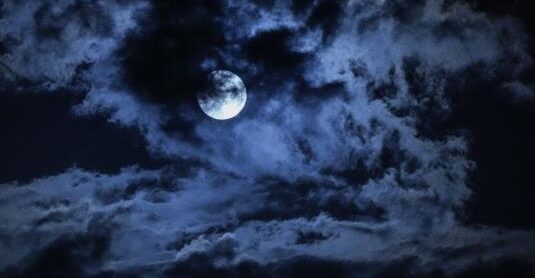BTN News: On Monday night, a rare celestial event graced the skies over cities such as Beirut and Jerusalem, capturing the awe of stargazers around the globe. This remarkable astronomical display was the result of two fascinating phenomena converging: a supermoon and a blue moon. A supermoon occurs when the moon is at its closest point to Earth in its orbit, making it appear larger and brighter than usual. Meanwhile, the term “blue moon” can be misleading, as the moon doesn’t actually turn blue. Instead, this term refers to an additional full moon within a specific period. In this case, it was the third full moon in a season that unusually featured four full moons.
As night fell, the supermoon blue illuminated the heavens, casting a mesmerizing glow that captured the attention of people in various parts of the world. Beirut and Jerusalem, known for their rich historical and cultural heritage, found themselves under the spell of this celestial event. The supermoon appeared impressively large and vivid, its proximity to Earth creating an almost tangible connection with those who took the time to look up and witness this rare occurrence.
The beauty of the supermoon is not merely in its size but also in the brightness it brings. When the moon is closest to Earth, its light is amplified, casting shadows and creating an ethereal ambiance. In cities with less light pollution, the experience is even more profound, with the moon’s glow dominating the night sky and reflecting off surfaces in a way that seems otherworldly. For those in Beirut, the moonlight danced off the Mediterranean Sea, while in Jerusalem, it illuminated the ancient stone walls, creating a surreal atmosphere that felt almost magical.
The rarity of this event lies in the combination of a supermoon and a blue moon. The term “blue moon” has often sparked curiosity and confusion, as many expect the moon to take on a blue hue. However, the origin of the term is more about timing than color. Typically, a season has three full moons, but occasionally, as in this case, four full moons occur in a single season. The third full moon in this quartet is what is known as a “blue moon.”
This astronomical spectacle provided a perfect opportunity for photographers and sky watchers to capture stunning images and create lasting memories. The event also sparked a renewed interest in astronomy, as people around the world shared their experiences and photos on social media, connecting with others who were equally captivated by the sight. The supermoon blue served as a reminder of the wonders of the universe and the beauty that can be found simply by looking up.
For many, this event was more than just a visual treat; it was a moment of reflection and connection. In a world where daily life often feels overwhelming, the appearance of the supermoon blue offered a chance to pause and appreciate the natural world. It reminded us of the vastness of the cosmos and our small but significant place within it.
In the end, the supermoon blue was not just an astronomical event, but a shared human experience that brought people together, even if only for a brief moment. Whether viewed from the streets of Beirut, the rooftops of Jerusalem, or anywhere else on the planet, this celestial phenomenon served as a beautiful reminder of the universe’s infinite wonders. The night sky, with its brilliant supermoon blue, offered a fleeting yet unforgettable glimpse into the mysteries that lie beyond our world.


